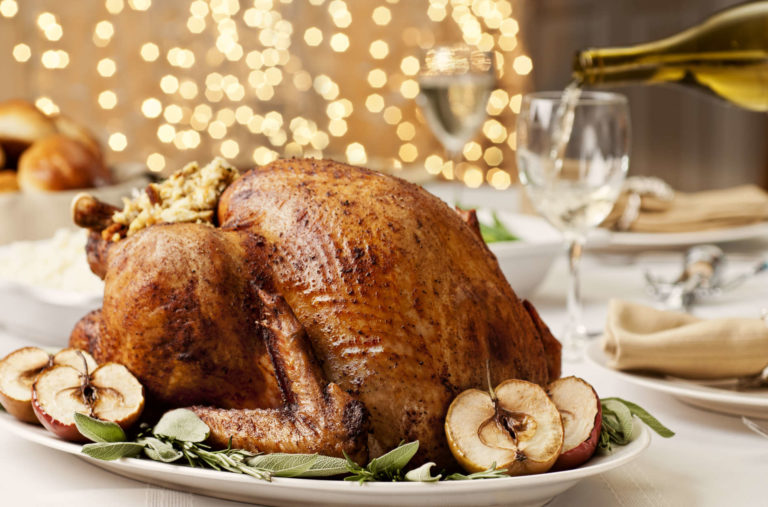Shopping for a turkey sounds simple, but holiday cooks — and particularly first-time holiday hosts — can find the process confusing, said Karen Blakeslee, Kansas State University Research and Extension food scientist.
Here is some advice about what to look for when picking out your Thanksgiving turkey, with tips from Williams-Sonoma, K-State’s Blakeslee, and the United States Department of Agriculture (USDA).
Should you choose a hen or a tom?
The sex designation of “hen” (female) or “tom” (male) turkey is optional on the label and is an indication of size rather than tenderness.
“Simply put, a hen is a female and typically smaller in size; a tom is a male and typically larger,” says Blakeslee. “The choice depends largely on the guest list. For a small crowd, choose a hen; for a larger crowd, a tom.” The flavor will be the same, she says.
If you’re buying a whole bird, it’s best to allow about one pound per person. If choosing a boneless turkey breast, allow one-half pound per person.)
What about the color?
Raw turkey skin color is off-white to a cream color. The color under the skin can range from pink to lavender blue, depending on the amount of fat just under the skin.
Fresh or frozen?
“A fresh turkey will be chilled, but at a temperature no lower than 26 degrees F (the temperature at which poultry begins to freeze),” Blakeslee says.
If a fresh turkey is preferred, the food scientist advised ordering it in advance and picking it up a day or two before the meal.
Purchasing a frozen turkey in advance allows consumers to take advantage of sale prices, Blakeslee says, and notes that frozen turkeys must be stored at 0 degrees F or below. She advises shoppers to examine the packaging to make sure the turkey is frozen “rock hard.”
“With a frozen turkey, consumers are reminded to allow plenty of time to thaw it,” says Blakeslee, who recommended placing a frozen turkey (breast side up, and in its original wrap) on a pan with a lip in the refrigerator to thaw.
Allow 24 hours of thawing time for each 4 to 5 lbs.; for a Thanksgiving meal, for example, start thawing a 15-lb. turkey on Monday, she says.
What do other labels on turkey mean?
Basted: “Basted” indicates a turkey has been injected with solution of water, broth, butter, seasonings or other flavor enhancer. However, according to Blakeslee, basting does not guarantee improved flavor or better quality.
Natural: “Natural” or “all natural” indicates that meat and poultry products have minimal processing and do not contain artificial flavoring, coloring, preservatives, artificial or synthetic ingredients.
Organic: Designation as “organic” indicates that a product meets the USDA requirements of the National Organic Program, which prohibits the use of genetically engineering methods, ionizing radiation and sewage sludge for fertilization and also includes processing requirements. Organic methods alone cannot guarantee food safety and security, says Blakeslee, who noted that even organically-produced eggs were recently found to carry salmonella.
Fryer-Roaster: A young turkey, usually less than 16 weeks of age and of either sex.
Free-range: A “free-range turkey” must have access to the outdoors at least 51 percent of the time, and a “fryer-roaster” indicates a young turkey, less than 16 weeks old and of either sex.
No antibiotics: “No added antibiotics” or “raised without use of antibiotics” requires producers to document that animals were raised without antibiotics in feed, water, or intra-muscular.
Hormone-free: According to Blakeslee, hormones are not allowed in poultry production. If a poultry product contains the claim “no hormones added” or “raised without the use of hormones,” claims must be followed by “Federal regulations do not permit the use of hormones in poultry.”
Kosher: “Kosher” may be used only on the labels of turkeys that are prepared under Rabbinical supervision. The processing of these birds has been supervised such that they meet kosher standards of not mixing meat and dairy, avoiding shellfish, etc.
Wild: Turkeys labeled “wild” are raised on farms and small in size, with a slightly gamey flavor and lean, dry texture.
Heritage: Heritage turkeys are direct descendants of America’s first turkeys; they’re also free-range, foraging, organically-raised and hormone- and antibiotic-free. They may lack the fat content of other varieties, but their flavor is more intense.









